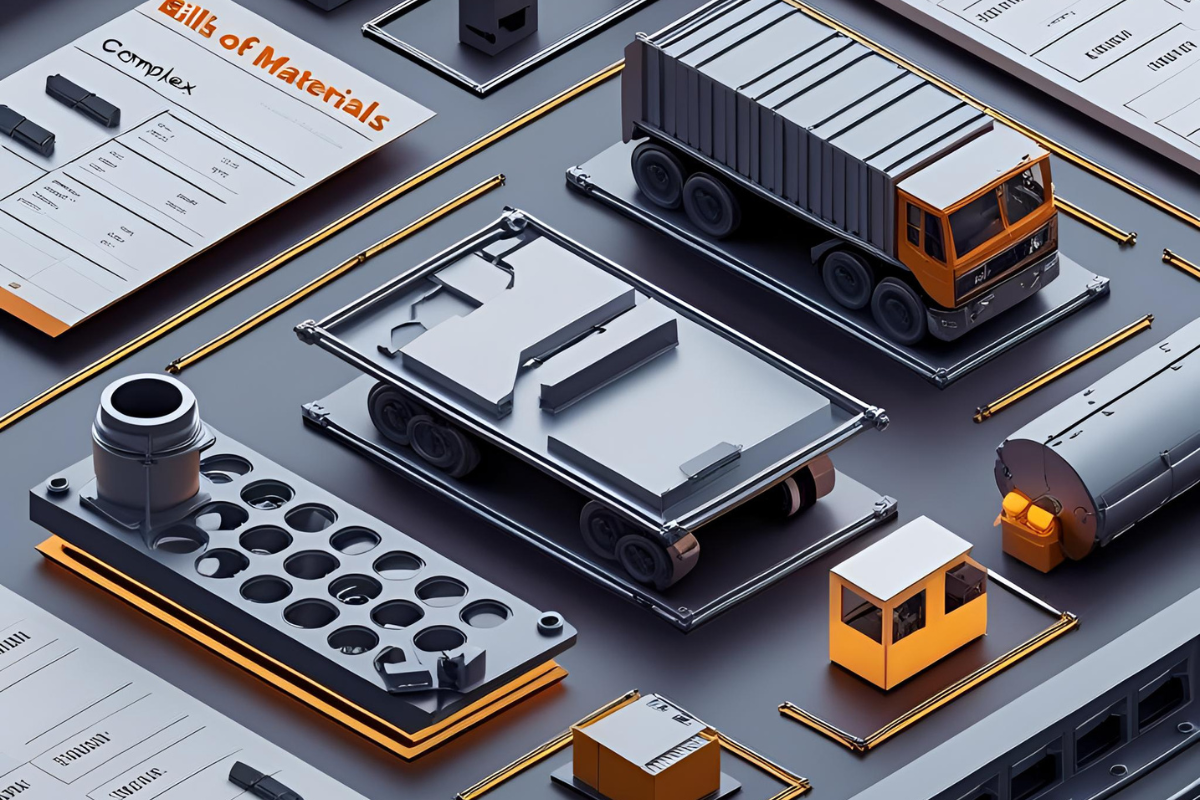What is Bill of Material (BOM)?
BOM is a complete quantity list of the raw materials, parts, assemblies which are required to construct or manufacture a product or a system. The BOM encompasses a comprehensive detail about the item relating to its specification, data sheets, drawings, manufacturing methods, suppliers and other materials to create or buying parts and or assemblies to build a product from end to end.
What is the usage of BOM?
BOM is an essential document that enables accurate data for product design, cost estimation and budgeting, inventory management, procurement management, production planning and manufacturing, Quality control, change management, maintenance, repair and after marketing support, and product documentation and management.
What are the types of BOM?
The BOM can be different types depending on purpose and stages of the product creation process. The different types of BOMs serve different functions within an organization, from sales to engineering to manufacturing to service and support.
Engineering Bill of Materials (EBOM):
The EBOM is created during the product design and development by engineering team. It typically contains list of all parts, components, subassemblies, and assemblies required to build a product according to the design specification. And this is structured according to their parts, assemblies’ relationships with the parent product.
Configurable Bill of Materials (CBOM):
The CBOM is designed to offers wide range of product variants based on customer specifications. It covers all possible options such as different components, features of the product that the customer can choose from. It allows flexibility in product offering, helps in accurately estimating the cost for variants, and improved lead time for product delivery.
Sales Bill of Materials (SABOM):
The SABOM facilitates to calculate the pricing of a product based on customer selections as it is designed to reflect in their product. This may include configurable option or variants of the product, which allowing the sales team to offer the customized product to the customer. It is usually the item list focuses on the aspect of the finished product as it is relevant to the customer.
Manufacturing Bill of Materials (MBOM):
The MBOM is the basis for manufacturing team to prepare how the product will be manufactured, including the sequence of operations, tools required, any additional items that needed for manufacturing, any special instructions for assembly, packaging, and inventory management.
Assembly Bill of Materials (ABOM):
The ABOM specifically lists the components and sub-assemblies required to create a particular assembly within a larger product. The list of ABOM as an assembly structure how the assembly is hierarchically made, which the relationship between the sub-assemblies and or components which are essential to build the specific assembly. It aids to streamline the assembly process and maintain high standards of quality and efficiency.
Single-Level BOM (SLBOM):
The SLBOM is the flat, single layer and no hierarchical structure that is used to list all components and sub-assemblies needed directly to build a product. It does not include the breakdown of parts into further sub-assemblies. It is a simple and suitable for simple product or high level BOM of the product. It used for direct manufacturing processes, basic inventory management, and cost estimation.
Multi-Level BOM (MLBOM):
The MLBOM is the hierarchical, nested levels and structured list of all parts down to lowest level of assembly of the product. It is more suitable for complex product with multiple sub-assemblies. It gives more benefits for engineering design, comprehensive cost estimation, detailed planning and manufacturing, change Management and quality control, Product Lifecycle Management, for products with multiple configurations and more.
Service Bill of Materials (SEBOM):
The SEBOM is the item list, parts, components and sub-assemblies that may need to be serviced, repaired, replaced, and or maintained to its product’s life cycle. It includes spare parts and consumables that service team can have the correct parts and information needed to maintain the product over time.
Template BOM (TBOM):
The TBOM is the predefined structure which always keeps baseline BOM of the product to create different variant of the products, by adding specific product features or configurations with baseline BOM list. It typically includes common parts, components, and materials that are commonly used across a product range, and it can be easily customized to fit specific product requirements. It can be used for products of varying complexities, from simple consumer goods to intricate industrial equipment, making it scalable to different levels of product complexity.
Do you know that IEHUB can manage your bill of materials in an efficient way? contact us to know more.

Palanivel Muthusamy is a seasoned expert in the Engineering, CAD, CAE, PLM, and PDM domains, boasting over 20 years of experience in project and product engineering within industrial companies. He holds both a Bachelor’s and a Master’s degree in Engineering, complemented by numerous certifications. Palanivel is highly proficient in engineering processes, including engineering change orders, notices, and quality processes, bringing a wealth of knowledge and hands-on expertise to the field.


